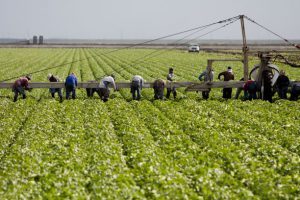
All pesticides marketed, sold, or used in the United States must be registered with the U.S. Environmental Protection Agency (EPA). We say this all the time, but how does that process work, where does funding come from and what is PRIA. It’s not some new car, but it is important because in the new funding bill that was passed PRIA got refunded AND some cool new features. Keep reading to understand What’s the Deal with EPA funding?
Let’s start with what PRIA stands for and why it is so important. It stands for Pesticide Registration Improvement Act (https://www.epa.gov/pria-fees/pria-overview-and-history) and it’s the process by which pesticides will be registered and reregistered. It helps to set common expectations and timelines that the EPA and the manufacturers most both follows. The fees collected during this process help to pay for the entire registration infrastructure AND help fund other initiatives. This act was set to expire, but luckily was funded in the omnibus bill passed at the end of 2022. We now have PRIA 5!
Although this may not seem as exciting as the registration process of testing, data collection, refinement, modeling and MORE. I know you are ALL just dying to discuss all the intricacies of exposure data collection on bluegill, but you will just have to settle for PRIA funding discussion. PRIA really does matter as it ensures there is funding for enforcement and many other actions the EPA has to undertake. Additionally, it makes it clear for both EPA and the registrants to understand the timeline and procedures for registration. For a process that can take a registrant decades and hundreds of millions of dollars, this is helpful.
Additional Projects
Through PRIA additional non-registration activities have been funded as well. In this version of PRIA funding was increased for farm worker safety and education projects. Farm workers face unique risks associated with pesticides, in that many of them do not work directly with the application of pesticides. They do however work in fields and areas where pesticides were sprayed. Ensuring that communication and training to these workers is robust enough to protect them with the same vigor put towards protecting the applicators themselves is important. Although the Worker Protection Standard (WPS) has been in place for a while, it never hurts to continue efforts to enhance education and programs to protecting farmers.
As a supplement to farmworker protection additional funds were approved for clinician training programs. These programs work with medical professionals to help them understand pesticide exposure symptoms and how they can better diagnose and track pesticide exposures. This will not only aid in proper medical care and diagnosis for those working around pesticides but should help better track actual occurrences of pesticide exposures. As it stands now many “exposures” may be falsely recorded, because any symptoms experienced by those around pesticides are marked as pesticide exposure. If someone comes in with heat stress, but says they work on a farm with pesticides, that could be marked as an exposure. Better documenting true exposures will not only help reduce these false exposures but will help doctors better identify even more subtle exposure symptoms. All this should lead to more and better data, which can ultimately inform better safety practices and procedures.
Finally, this version of PRIA requires ALL pesticides going through registration or reregistration to provide their labels in Spanish, as well as English. This is a critical safety step as many workers in the pesticide realm speak Spanish as their primary language. This will ensure they are able to BEST understand all the instructions on the label. Additionally, it will create opportunities for more to become licensed applicators, which are able to receive training to enhance safety. We should ALL desire everyone handling pesticides to be the best trained possible, and having training provided in someone’s native language achieves that. Those that have been watching the PIO know how committed we are to creating Spanish translated materials, so it is satisfying to see the federal government share that desire as well.
Summary
It may not be what many of you would call exciting to discuss federal budgets and PRIA funding, BUT it doesn’t mean it isn’t important. This last budget bill enhancing, for the first time in many years, the funding for EPA (particularly the pesticide portion of EPA) is a good sign that enhanced safety will be on the way. Not only was funding enhanced, but areas such as farm worker safety, clinician training, and Spanish language materials shows a focus on safety beyond the bare minimum related to applicators of pesticides. So, What’s the Deal with EPA funding? It shows that safety matters and enhanced training, in a language more can understand, is just around the corner.
Click to Subscribe
 1
1
